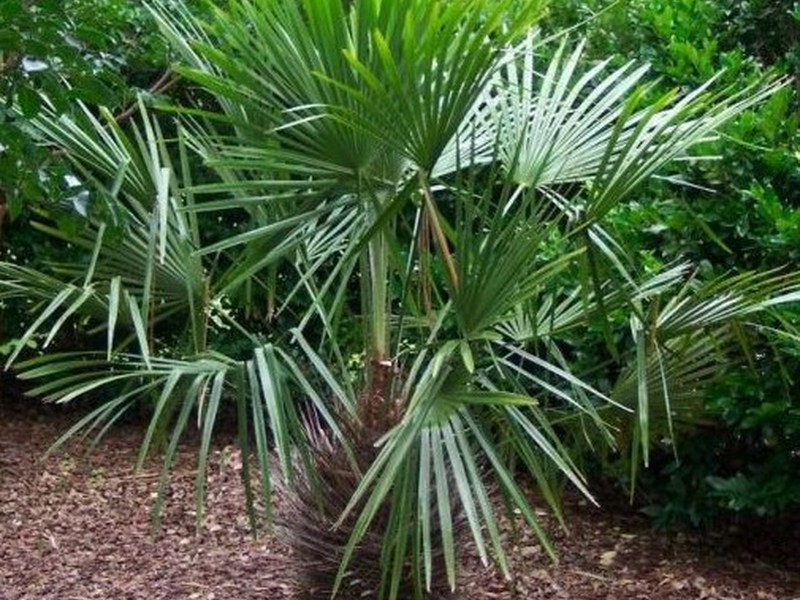Needle Palm
Rhapidophyllum hystrix
Click here to download a PDF of this plant information page (for printing).

Sun Exposure: Full Sun, Pt Sun, Shade
Season of Interest: Spring, Summer, Fall
Bloom Time: May
Bloom Color: Copper (insignificant)
Height: 6 ft.
Spread: 4 to 8 ft.
Spacing: 10 ft.
Water Needs: Average
Maintenance: Prune old fronds
Soil Type: Clay, Loam, Sandy
Soil pH: Acidic, Neutral, Alkaline
Soil Drainage: Well drained
Pests: None (Deer resistant)
Diseases: None
Wildlife: Birds

Description:
The needle palm is a native palm that can work well in home landscapes throughout the Southeast. Its lustrous, evergreen leaves make it a great tropical accent plant around pools and patios. It also adds good textural interest beneath new or established trees and does well in containers and as a houseplant.
The needle palm is a slow-growing, shrubby palm that will eventually grow into a clump that is six feet tall and eight feet wide. Its common name comes from the sharp, black needles found along its trunk (not on the foliage). The palm is especially prized among gardeners in cooler climates who want a tropical look, since it can tolerate temperatures several degrees below -10°F. Unprotected specimens are known to grow as far north as Washington D.C. and New York City. For more information see:
plants.ces.ncsu.edu/plants/rhapidophyllum-hystrix
Care and Growing Tips:
Needle palms display the best growth when planted in shade or part shade but can tolerate full sun. It grows best where summers are hot and humid. Although extreme cold weather (below -10°F) may cause some foliar damage, the plant usually recovers.
Needle palms need a moderate amount of water but are drought tolerant once established. For best growth, water enough to keep the soil moist, but make sure to not overwater. Reduce watering in winter. It is best to not fertilize this palm for the first 3 months after transplanting. Feed with a slow-release fertilizer in spring and summer. Mulch around the base in winter.
These palms prefer organically rich, evenly moist, and well-drained soil, but can tolerate dry and heavy clay soils.
Rhapidophyllum species are not demanding and hence, quite easy to grow. Prune the plant in spring to remove dead fronds and maintain a tidy growth habit. Once established, the lower fronds can be removed to expose the trunk and give a more tree-like appearance.